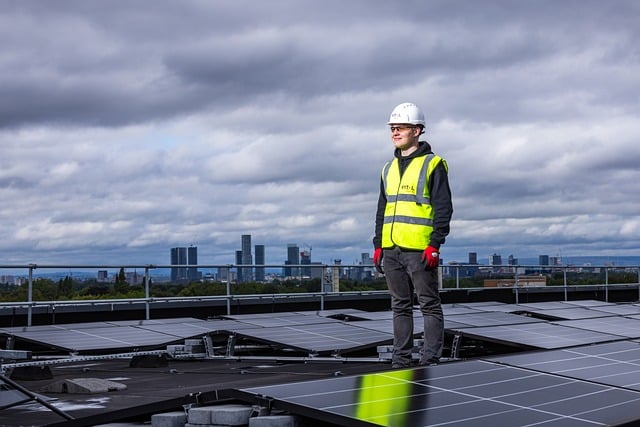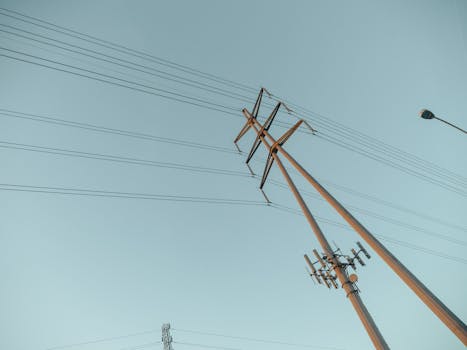“Empower Your Home: Essential Solar Wiring Safety Tips for Every Homeowner!”
Solar wiring safety is crucial for homeowners looking to harness the power of solar energy while ensuring the safety of their property and family. Proper installation and maintenance of solar wiring can prevent electrical hazards, fires, and system failures. Understanding the essential safety tips, such as using appropriate materials, following local codes, and employing professional help when necessary, can significantly reduce risks. This guide outlines key safety practices that every homeowner should be aware of to ensure a safe and efficient solar energy system.
Proper Circuit Breaker Sizing
When it comes to solar energy systems, ensuring proper circuit breaker sizing is a critical aspect of safety that every homeowner should prioritize. Circuit breakers serve as the first line of defense against electrical overloads and short circuits, protecting both the solar system and the home’s electrical infrastructure. Therefore, understanding how to size these breakers correctly is essential for maintaining a safe and efficient solar energy system.
To begin with, it is important to recognize that circuit breakers are designed to interrupt the flow of electricity when it exceeds a predetermined limit. This limit is determined by the amperage rating of the breaker, which must be carefully matched to the specific requirements of the solar system. If the breaker is too small, it may trip frequently, causing unnecessary interruptions in power generation. Conversely, if the breaker is too large, it may not trip when it should, potentially leading to overheating and fire hazards. Thus, finding the right balance is crucial.
One of the first steps in proper circuit breaker sizing is to calculate the total output of the solar panels. This involves determining the wattage of each panel and multiplying it by the total number of panels in the system. Once the total wattage is established, homeowners can convert this figure into amperage using the formula: Amperage = Wattage / Voltage. This calculation provides a baseline for selecting an appropriate circuit breaker. However, it is essential to consider additional factors, such as the type of inverter used and the specific characteristics of the electrical system in the home.
Moreover, it is advisable to account for the National Electrical Code (NEC) guidelines, which provide specific recommendations for circuit breaker sizing in solar installations. According to the NEC, the circuit breaker should be rated at 125% of the maximum current output of the solar array. This additional capacity allows for fluctuations in power generation due to varying sunlight conditions and ensures that the system can handle temporary surges without tripping unnecessarily. By adhering to these guidelines, homeowners can enhance the safety and reliability of their solar energy systems.
In addition to sizing the circuit breaker correctly, it is also important to ensure that the wiring used in the solar installation is compatible with the breaker. The wire gauge must be appropriate for the amperage rating of the circuit breaker to prevent overheating and potential fire risks. Homeowners should consult with a qualified electrician to determine the correct wire size based on the distance between the solar panels and the breaker panel, as longer distances may require larger gauge wires to minimize voltage drop.
Furthermore, regular maintenance and inspections of the solar system are vital for ensuring ongoing safety. Homeowners should periodically check the circuit breakers for any signs of wear or damage, as well as inspect the wiring for any fraying or corrosion. If any issues are detected, it is crucial to address them promptly to prevent more significant problems down the line.
In conclusion, proper circuit breaker sizing is an essential component of solar wiring safety that every homeowner should understand. By calculating the total output of the solar panels, adhering to NEC guidelines, ensuring compatibility with wiring, and conducting regular maintenance, homeowners can significantly reduce the risk of electrical hazards. Ultimately, taking these precautions not only protects the solar energy system but also contributes to the overall safety and efficiency of the home’s electrical infrastructure.
Grounding and Bonding Requirements

When it comes to solar energy systems, understanding grounding and bonding requirements is crucial for ensuring both safety and efficiency. Grounding refers to the process of connecting the electrical system to the earth, while bonding involves connecting various components of the system to ensure they operate at the same electrical potential. These practices are essential for protecting both the equipment and the individuals who interact with it, as they help prevent electrical shock and reduce the risk of fire.
To begin with, proper grounding of a solar energy system is vital for dissipating any fault currents that may occur. In the event of a short circuit or lightning strike, a well-grounded system directs excess electricity safely into the ground, minimizing the risk of damage to the solar panels and other components. Homeowners should ensure that their solar installations include a grounding electrode system, which typically consists of ground rods driven into the earth. The National Electrical Code (NEC) provides specific guidelines on the installation of these grounding electrodes, and it is essential to adhere to these standards to maintain safety.
Moreover, bonding is equally important in a solar energy system. This process ensures that all metallic parts of the system, including the solar panels, inverters, and mounting structures, are electrically connected. By bonding these components, homeowners can prevent the buildup of voltage differences that could lead to electrical shock or equipment failure. It is recommended that homeowners consult with a qualified electrician to ensure that all bonding connections are secure and compliant with local codes.
In addition to grounding and bonding, it is also important to consider the placement of grounding electrodes. The NEC specifies that grounding electrodes should be located as close as possible to the solar inverter and other electrical equipment. This proximity helps to minimize the length of grounding conductors, which can reduce resistance and improve the overall effectiveness of the grounding system. Homeowners should also be aware of the soil conditions in their area, as certain types of soil may require additional grounding measures to ensure adequate conductivity.
Furthermore, regular maintenance of the grounding and bonding systems is essential for long-term safety. Homeowners should periodically inspect the grounding connections for signs of corrosion or damage, as these issues can compromise the effectiveness of the system. Additionally, any changes to the solar installation, such as the addition of new panels or equipment, may necessitate a reevaluation of the grounding and bonding setup. It is advisable to engage a professional to conduct these inspections and make any necessary adjustments.
In conclusion, understanding and implementing proper grounding and bonding requirements is a fundamental aspect of solar wiring safety that every homeowner should prioritize. By ensuring that their solar energy systems are correctly grounded and bonded, homeowners can protect their investments and enhance the safety of their homes. As solar technology continues to evolve, staying informed about best practices and regulatory requirements will empower homeowners to make informed decisions about their solar installations. Ultimately, a well-grounded and bonded solar system not only contributes to the safety of the household but also promotes the reliability and efficiency of renewable energy use.
Use of Appropriate Wiring Materials
When it comes to solar energy systems, the use of appropriate wiring materials is crucial for ensuring both safety and efficiency. Homeowners embarking on the journey of solar installation must understand that not all wiring is created equal. The selection of wiring materials directly impacts the performance of the solar system, as well as the safety of the entire installation. Therefore, it is essential to choose wiring that is specifically designed for solar applications.
One of the primary considerations when selecting wiring for solar systems is the type of insulation used. Solar wires are typically insulated with materials that can withstand extreme temperatures and environmental conditions. For instance, wires with cross-linked polyethylene (XLPE) insulation are highly recommended due to their durability and resistance to UV radiation. This is particularly important since solar panels are often exposed to direct sunlight for extended periods. Using inferior insulation can lead to degradation over time, increasing the risk of electrical failures or even fires.
In addition to insulation, the gauge of the wire is another critical factor. The wire gauge determines the amount of current that can safely pass through it without overheating. For solar installations, it is essential to use the correct gauge to prevent voltage drop and ensure optimal performance. Generally, larger gauge wires are used for longer runs to minimize resistance. Homeowners should consult the National Electrical Code (NEC) guidelines or seek professional advice to determine the appropriate wire gauge for their specific system.
Moreover, the choice of connectors and terminals is equally important. Solar systems often require specialized connectors that can handle the unique demands of photovoltaic (PV) systems. These connectors should be rated for outdoor use and capable of withstanding moisture and corrosion. Using substandard connectors can lead to poor connections, which may result in energy loss or even system failure. Therefore, investing in high-quality connectors is a wise decision that can enhance the longevity and reliability of the solar installation.
Furthermore, it is vital to consider the overall layout of the wiring. Proper routing and securing of wires not only contribute to the aesthetic appeal of the installation but also play a significant role in safety. Wires should be neatly organized and secured to prevent them from becoming damaged or creating tripping hazards. Additionally, homeowners should avoid running wires through areas where they may be exposed to physical damage, such as sharp edges or heavy foot traffic. By taking these precautions, homeowners can significantly reduce the risk of accidents and ensure a safe environment.
As homeowners delve into the world of solar energy, it is also essential to stay informed about local codes and regulations regarding electrical installations. Many jurisdictions have specific requirements for solar wiring that must be adhered to in order to ensure safety and compliance. Familiarizing oneself with these regulations can help prevent costly mistakes and ensure that the installation meets all necessary standards.
In conclusion, the use of appropriate wiring materials is a fundamental aspect of solar energy systems that every homeowner should prioritize. By selecting high-quality insulation, the correct wire gauge, reliable connectors, and ensuring proper installation practices, homeowners can enhance the safety and efficiency of their solar systems. Ultimately, investing time and resources into understanding and implementing these wiring safety tips will lead to a more reliable and effective solar energy solution, paving the way for a sustainable future.
Regular Inspection and Maintenance Practices
When it comes to solar energy systems, regular inspection and maintenance practices are crucial for ensuring both safety and efficiency. Homeowners who invest in solar panels must understand that these systems, while generally low-maintenance, require periodic checks to prevent potential hazards and to maximize their performance. One of the first steps in establishing a routine inspection schedule is to familiarize oneself with the components of the solar system. This includes not only the solar panels themselves but also the inverter, wiring, and any associated electrical equipment. By understanding how these components work together, homeowners can better identify any signs of wear or malfunction.
To begin with, visual inspections should be conducted at least twice a year. During these inspections, homeowners should look for any physical damage to the solar panels, such as cracks or discoloration, which could indicate a problem. Additionally, checking for debris accumulation, such as leaves or dirt, is essential, as this can obstruct sunlight and reduce efficiency. It is also important to inspect the mounting hardware to ensure that everything is secure and free from rust or corrosion. If any issues are detected during these visual checks, it is advisable to consult a professional for further evaluation and repair.
In addition to visual inspections, homeowners should also pay attention to the performance of their solar systems. Monitoring energy production can provide valuable insights into the system’s health. If there is a noticeable drop in energy output, it may signal an underlying issue that requires immediate attention. Many modern solar systems come equipped with monitoring software that allows homeowners to track their energy production in real-time, making it easier to spot discrepancies. By staying vigilant about performance metrics, homeowners can address potential problems before they escalate into more significant safety concerns.
Furthermore, regular maintenance of the electrical components is essential for ensuring safety. This includes checking the wiring for any signs of wear, such as fraying or discoloration, which could pose a fire hazard. Homeowners should also inspect the inverter, as it plays a critical role in converting solar energy into usable electricity. If the inverter is making unusual noises or displaying error messages, it may need professional servicing. Additionally, ensuring that all electrical connections are tight and free from corrosion can help prevent electrical failures.
Another important aspect of maintenance is ensuring that the system is compliant with local codes and regulations. Homeowners should familiarize themselves with any relevant guidelines regarding solar installations in their area. This not only helps in maintaining safety standards but also ensures that the system operates efficiently and remains eligible for any available incentives or rebates.
In conclusion, regular inspection and maintenance practices are vital for the safety and efficiency of solar energy systems. By conducting routine visual checks, monitoring performance, and maintaining electrical components, homeowners can significantly reduce the risk of hazards while optimizing their solar investment. Moreover, staying informed about local regulations and best practices will further enhance the longevity and reliability of the system. Ultimately, a proactive approach to solar system maintenance not only safeguards the home but also contributes to a more sustainable future.
Q&A
1. **Question:** What is the first step to ensure safety when working with solar wiring?
**Answer:** Always disconnect the solar system from the grid and turn off all circuit breakers before starting any work.
2. **Question:** Why is it important to use the correct gauge of wire for solar installations?
**Answer:** Using the correct gauge prevents overheating and reduces the risk of electrical fires due to excessive current flow.
3. **Question:** What should homeowners do to protect solar wiring from environmental damage?
**Answer:** Use UV-resistant conduit and weatherproof connectors to shield wiring from sunlight, moisture, and extreme temperatures.
4. **Question:** How can homeowners ensure proper grounding of their solar system?
**Answer:** Install a grounding system according to local codes and regulations to prevent electrical shock and equipment damage.
Conclusion
In conclusion, homeowners should prioritize solar wiring safety by ensuring proper installation by qualified professionals, regularly inspecting wiring for damage or wear, using appropriate protective equipment, adhering to local electrical codes, and implementing safety measures such as circuit breakers and grounding systems. Additionally, educating themselves about the system’s operation and maintenance can further enhance safety and efficiency.




